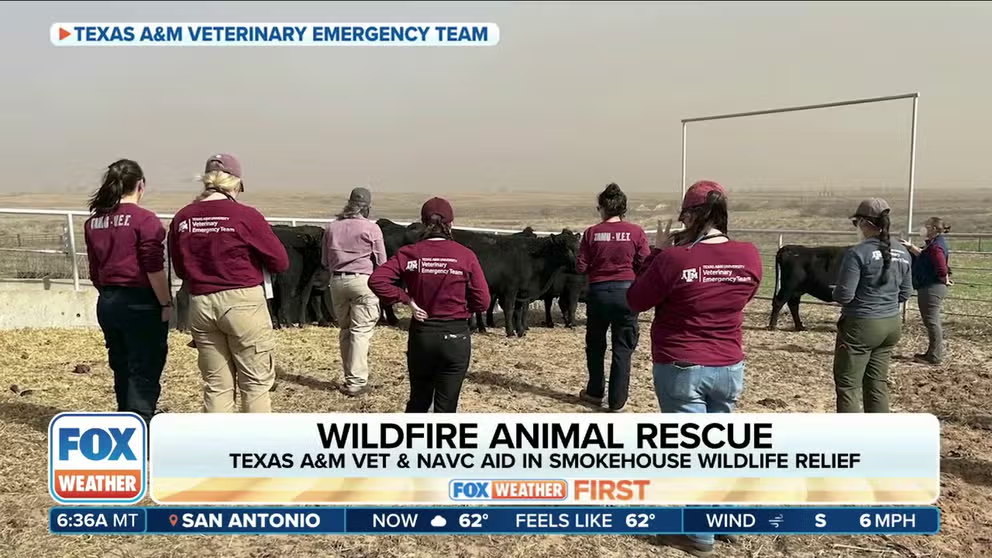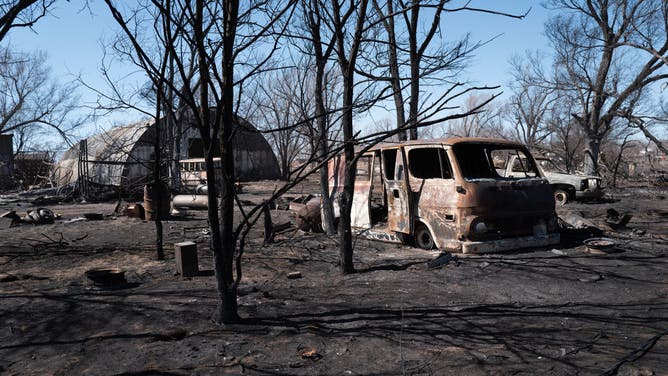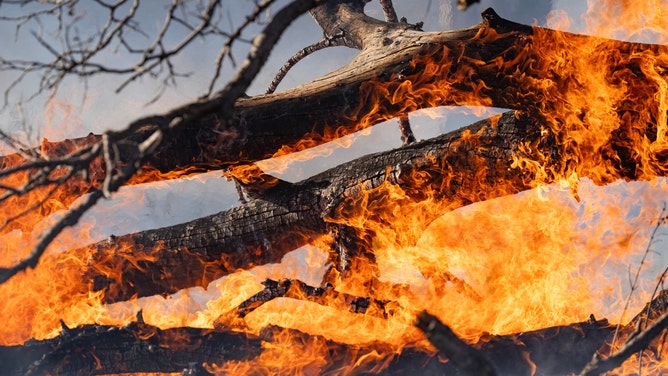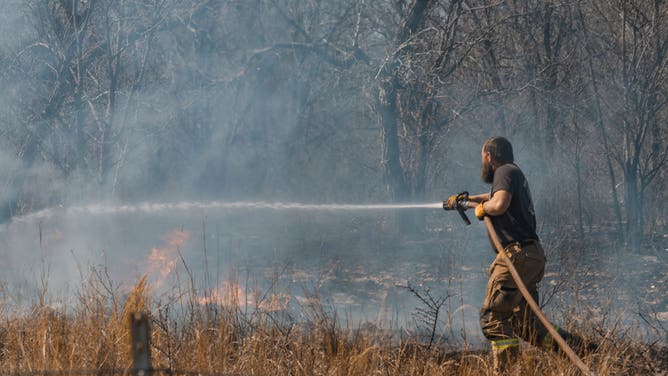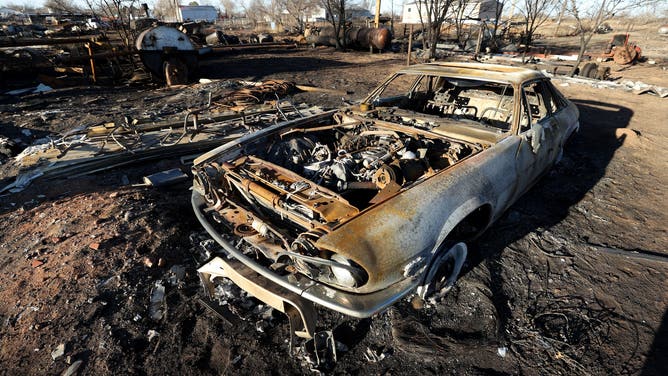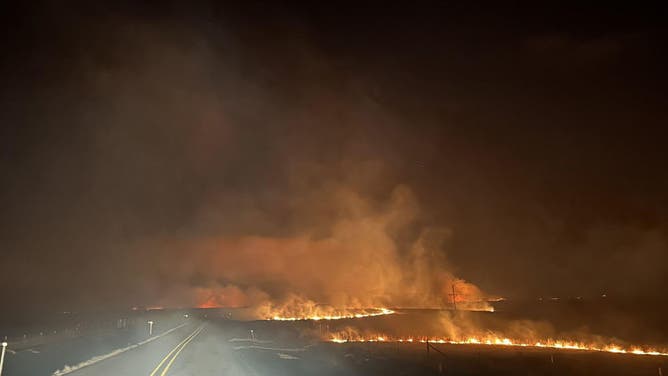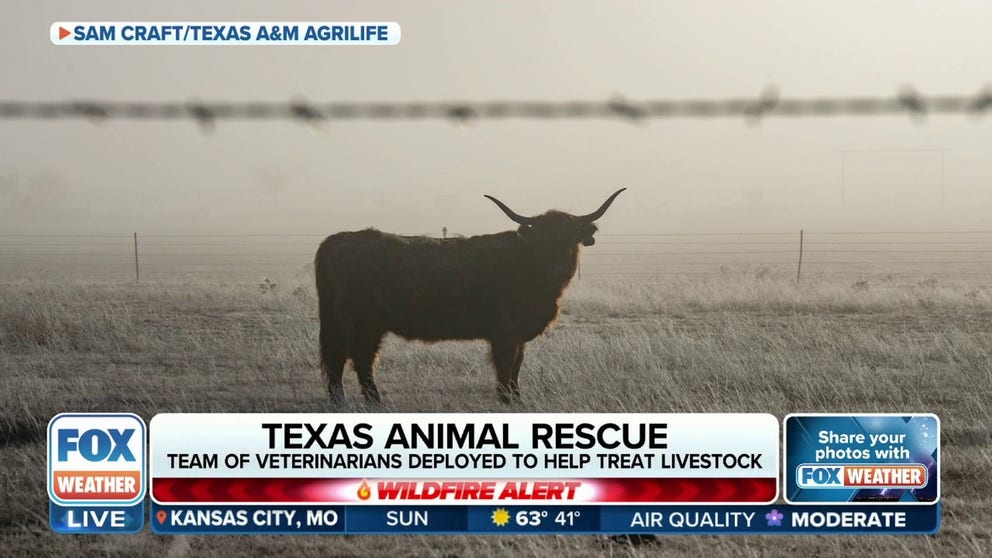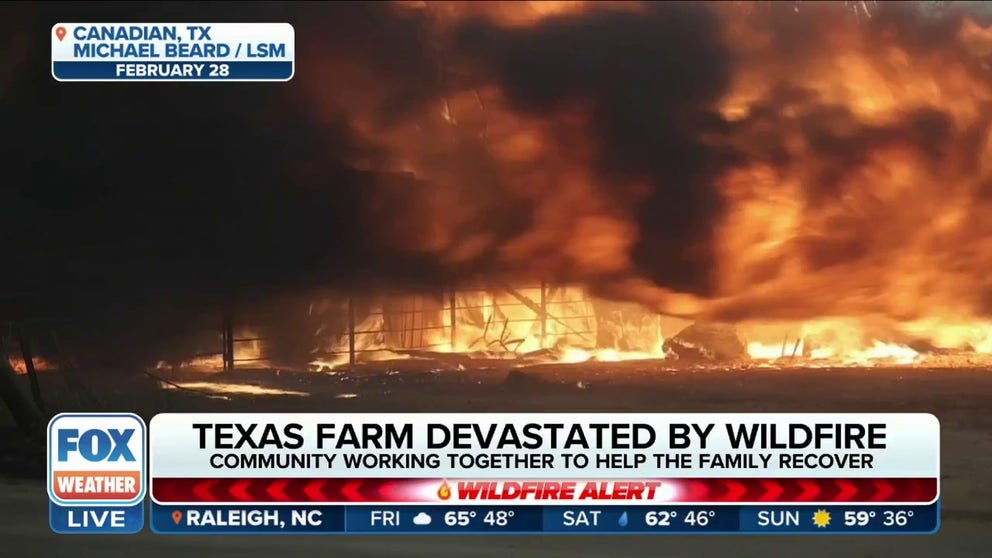Texas A&M Veterinary Emergency Team receives award for valiant response to historic Smokehouse Creek Fire
The Smokehouse Creek Fire raged for weeks and killed two people, destroyed hundreds of structures and killed countless animals while it burned more than 1 million acres, becoming the largest wildfire in Texas state history.
Texas A&M Veterinary Emergency Team receives award for response to Smokehouse Creek Fire
The North American Veterinary Community announced the Texas A&M Veterinary Emergency Team was the recipient of the 2024 NAVC Gives award for its response to the devastating Smokehouse Creek Fire that tore across the Texas Panhandle earlier this year.
The Texas A&M Veterinary Emergency Team (VET) has received an award for its valiant effort to treat hundreds of animals as the historic Smokehouse Creek Fire burned its way across the Texas Panhandle.
The Smokehouse Creek Fire raged for weeks and killed two people, destroyed hundreds of structures and killed countless animals while it burned more than 1 million acres, becoming the largest wildfire in Texas state history.
WATCH: FORT WORTH FIREFIGHTERS DRIVE THROUGH FLAMES TO JOIN BATTLE AGAINST TEXAS WILDFIRE
Drone video shows devastating aftermath from Texas Smokehouse Creek Fire
Drone video over the towns of Stinnett and Fritch, Texas show scorched homes and properties from the Smokehouse Creek Fire. The blaze has consumed more than 1 million acres, becoming the largest in Texas history. (Video credit: Allen Garland via Storyful)(Video from February 2024)
And as word of the wildfire’s explosive growth spread, VET was ready to spring into action to respond to the disaster.
"We were actually in College Station. We were watching when the fire first started," said Texas A&M VET Director Dr. Deb Zoran. "We have a tendency to really watch the weather and what’s going on in the state very closely. We knew there was a pretty good fire up there. So, we started watching very, very closely and actually started preparing to get ready to go."
Zoran said it was going to be a massive team effort because of the size of the fire, and two teams started to prepare to respond.
"One aspect was to support the search and rescue dogs, which were going to be going to search and burned homes," she said. "And that’s a piece and part of what we do. To protect their feet and protect them."
The other team was preparing to help the affected livestock.
"We had a team that was preparing to go primarily to help with livestock because we knew this was going to be a large, rural livestock pasture base type of response for cattle and horses, particularly," Zoran said. "So, two-team sort of effort, two sort of, different types of approaches, but something that’s we’re used to doing."
Texas A&M response captures attention of North American Veterinary Community
Veterinarians deployed to help livestock threatened by massive Texas wildfires
Dr. Deb Zoran, the Director of the Texas A&M Veterinary Emergency Team, joined FOX Weather on Sunday to talk about the immense loss of livestock across the Texas Panhandle after massive wildfires swept across the region and how teams of veterinarians descended upon the area to help in the wake of the disaster. (Video from March 2024)
While the eyes of the world were watching the historic fire burn across the Texas Panhandle, the heroic efforts of the Texas A&M teams captured the attention of the North American Veterinary Community (NAVC).
"We monitor news broadcasts across the country, mostly about anything that has to do in the veterinary space since that’s our area of expertise," NAVC CEO Gene O’Neill said. "And we followed this story just like everyone else on the local news broadcasts."
SURVIVAL EXPERT OFFERS TIPS TO PROTECT YOUR HOME FROM WILDFIRES
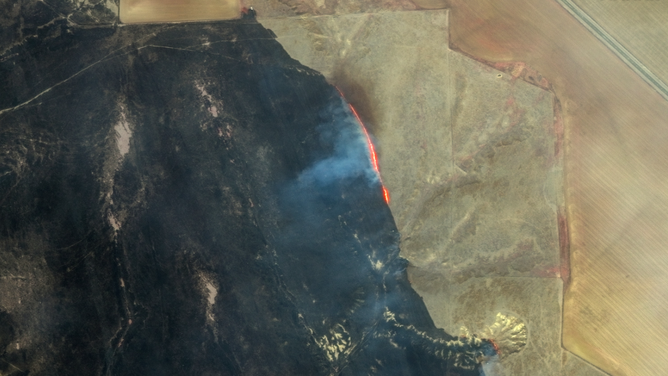
Maxar satellite imagery of Smokehouse Creek wildfire in Texas
(Satellite image ©2024 Maxar Technologies / FOX Weather)
O’Neill said that’s when he heard about the Texas A&M VET response and knew it would be the perfect recipient for the NAVC Gives award.
"We’re trying to recognize and support those that have made a profound difference in their clinic, in their community or in their profession at large," he said. "And we realized that the Texas A&M team really captured the spirit and intent of what our NAVC Gives program is really all about."
And that award came with a $10,000 contribution in recognition of the team’s work.
"This NACV Gives program is backed by a $1 million commitment," O’Neill said. "And the Texas A&M team is the third recipient. It’s a brand new program, we just launched it last year, but they are the third recipient of an award of $10,000 for their efforts to be put to good use for their mission and their vision."
'SHEEP FIRE'? 'PIPELINE FIRE'? 'HAYWIRE FIRE'? HOW WILDFIRES GET THEIR NAMES
Students get real-life experience to help them as they launch veterinary career
Texas farms devastated by wildfire
A Texas family estimated they lost half their animal stock during the massive Smokehouse Creek Wildfire.
For veterinary students in the Texas A&M program, the response to the Smokehouse Creek Fire was a different perspective for them. And their experience is likely to remain with them as they embark on their veterinary journey.
"That’s one of the things that we really, we embrace with our students," Zoran said. "This is such a good experience for them to have. This real-world, natural disaster experience that we try very, very hard to be careful how we introduce them."
Zoran said students aren’t just thrown into the situation without preparation or guidance.
"We have them with our team members," she said. "We’re very careful about where we put them, but it’s a really good experience for them as future veterinarians to be able to help communities on their worst day, to be able to take care of animals with maybe not all their normal things, like they would have in their practice, and to be able to be there when really horrible things happen to people and their animals. To help start the recovery process."
